 |
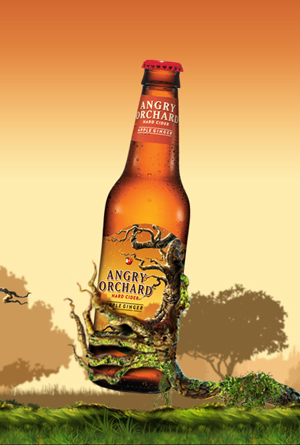 |
One of three hard ciders from Angry Orchard. Cider images courtesy Angry Orchard. |
| WHAT IT IS: Hard cider in three varieties. |
| WHY IT’S DIFFERENT: The very sophisticated blends of culinary and bittersweet apples deliver complex flavors and aromas. |
WHY WE LOVE IT: Very elegant flavors. Like fine beer, the ciders pair well with casual foods and complex cuisine. |
| WHERE TO BUY IT: Retailers nationwide. Find a store locator on the company website. |
|
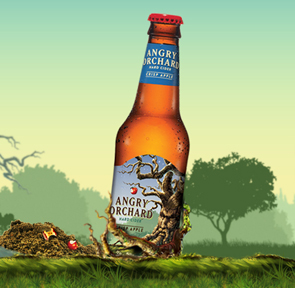
Angry Orchard Crisp Apple Cider in bottle and six
-pack.
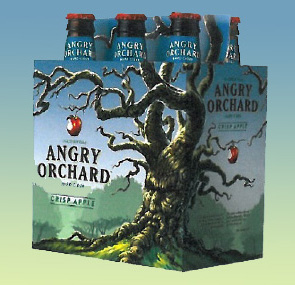
|
|
Angry Orchard, Terrific
Hard Cider
Jump to the article index below
In anticipation of Memorial Day entertaining, we were tasting hard ciders. Why is the orchard angry, we wondered about the three ciders in the new Angry Orchard line?
The answer: It’s ciderspeak. Angry Orchard ciders are a blend of both culinary apples (eating apples) and bittersweet apples, which are used for cider making. The bittersweet apples are called “angry” by cider makers, because of the tart and tannic characteristics they impart to the cider. In addition to sharp, dry flavors, the apples are small and unattractive as table fruit—more reasons to be angry.
A More Complex Cider
Cider can be made with any variety of apple (and you can make your own cider at home—check out the books below).
But as with many foods, a more complex recipe yields more exciting flavors. The apple blends used to make Angry Orchard were tested for more than 15 years to find the complex flavor profile for each of the three varieties in the line: Apple Ginger Cider, Crisp Apple Cider and Traditional Dry Cider.
Famous Parentage
Once you know that Angry Orchard is made by the Boston Brewing Company, makers of Samuel Adams beer, you know that the company had the deep pockets for development. It searched the world to find the right orchards—those with ideal climate and soil composition—and the best combination of apple types.
The cider makers ended up with apples from the traditional growing regions of Europe, selecting bittersweet apples from France and culinary apples from Italy. The juice is pressed overseas, then shipped to the cider makers in the U.S. After a lengthy fermentation process, including oak aging for complexity and balance, the cider is bottled for store purchase as well as sent by the barrel for to order on tap at pubs and restaurants.
Varieties Of Angry Orchard Hard Cider
The ABV of the ciders is 5% to 5.5%.
Angry Orchard Crisp Apple Cider
By far our favorite, this crisp and refreshing cider is simply elegant, with fresh apple aroma, sweet apple notes (but not too sweet!) on the palate and subtle dryness at the finish. The balance enables it to pair well with foods, too—whether a sandwich or a pork loin roast. There was delightful pétillance* in this variety, but not on the other two.
*Small amounts of carbon dioxide gas found in some wines that give a bit of that sparkle, or freshness.
Angry Orchard Ginger Cider
Fresh ginger is blended with the juice, but our bottles didn’t have enough ginger for us to notice. Yet a friend in Boston says it’s his favorite flavor. We’ll wait for a new batch to hit the shelves and try again.
Angry Orchard Traditional Dry Cider
Made in the style of English draft ciders, the higher proportion of “angry” apples produces a less sweet cider style. As with the Ginger Cider, we found this flavor a bit flat; there was no pucker, for example, and less intense flavor.
Still, we’ve made our decision: We like the Crisp Apple Cider so much, we’re stocking up for our Memorial Day Festivities.
— Karen Hochman
The article continues below, with cider history and cider apples.
|
| |
|
|
Make Your Own Cider
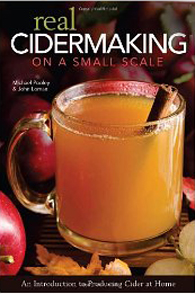 |
|
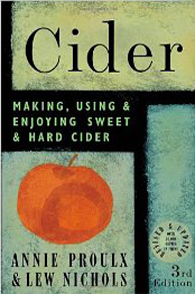 |
|
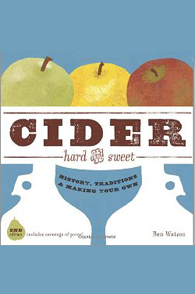 |
Real Cidermaking on a Small Scale: An Introduction to Producing Cider at Home, by Michael Pooley and John Lomax. Learn to make cider from any type of apple—and how to build a cider press. More information.
|
|
Cider: Making, Using & Enjoying Sweet & Hard Cider, by Annie Proulx and Lew Nichols. Make six types of cider, including still and sparkling, as well as your own (superior) cider vinegar. More information. |
|
Cider, Hard and Sweet: History, Traditions, and Making Your Own, by Ben Watson. A global view of cider, how to make it, and how to cook with it. You may be inspired to grow your own apples! More information.
|
INDEX OF REVIEW
This is Page 1 of a one-page review. Click on the black links to visit other articles:
|
MORE TO DISCOVER
|
Cider History
Since Prohibition, “cider” in the U.S. has referred to unfermented, unpasteurized, and often unfiltered, apple juice.
But in the U.K., it is exactly the opposite, an alcoholic drink for which special cider apples are used.
Cider-making in was introduced to England in the Norman Conquest of 1066. Apple juice had been fermented into an alcoholic drink earlier, under the Anglo-Saxons. But the Normans, from France, introduced their cider (known in the U.S. as hard cider), made with cider-specific apples.
The English word “cider” comes from the Old French sidre, which in turn was adapted from medieval Latin sicera, based on the Greek sikera, from the Hebrew shekar, meaning “strong drink.” What we call fresh cider was known as ciderkin or water-cider.
It’s easy to understand why cider was more popular than ciderkin: In the days before refrigeration, preserving fresh juice was impossible. The only option was to ferment it into cider; the alcohol acted as a preservative.
|
|
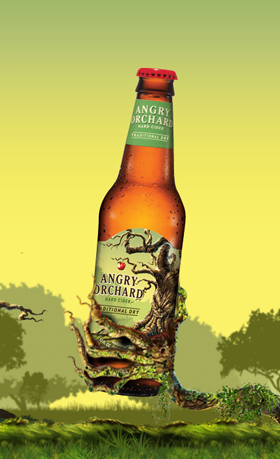
Traditional Dry Cider. |
Cider Apples
While culinary apple varieties are pretty familiar, people outside of the cider business typically have no familiarity with the “angry,” bittersweet apples used to balance the blend.
- Culinary Apples. These are the “eating apples”: fruits with a juicy, luscious apple character. The varieties used in Angry Orchard cider contribute sweetness as well as a bright acidity, which provides part of the crisp, refreshing backbone. Grown at the foothills of the Alps, the varieties in Angry Orchard include Braeburn, Elstar, Gala, Golden Delicious, Granny Smith, Jonagold and Red Delicious.
- Bittersweet Apples. These “angry” apples from Normandy, in the north of France, are grown solely for making cider. These apples provide more complexity and wine-like characteristics to a cider, like grapes would to a wine, imparting aroma and contributing to the amber color. They also provide acidity, tannins that impact mouth feel, astringency, and real fruity cider notes. Bittersweet apples in the blend are French varieties, including Amere de Berthecourt, Beden, Binet Rouge, Brairtot Fuji and Medaille d’or, Michelin.
Do you have friends who would enjoy THE NIBBLE?
Click here to send them an invitation to sign up for their own copy. |
© Copyright 2004-
2025
Lifestyle Direct, Inc. All rights reserved. All information contained herein is subject to change at any time without notice. All details must be directly confirmed with manufacturers, service establishments and other third parties. The material in this e-zine may not be reproduced, distributed, transmitted, cached, or otherwise used, except with the prior written permission of Lifestyle Direct, Inc. |
|

|
 |